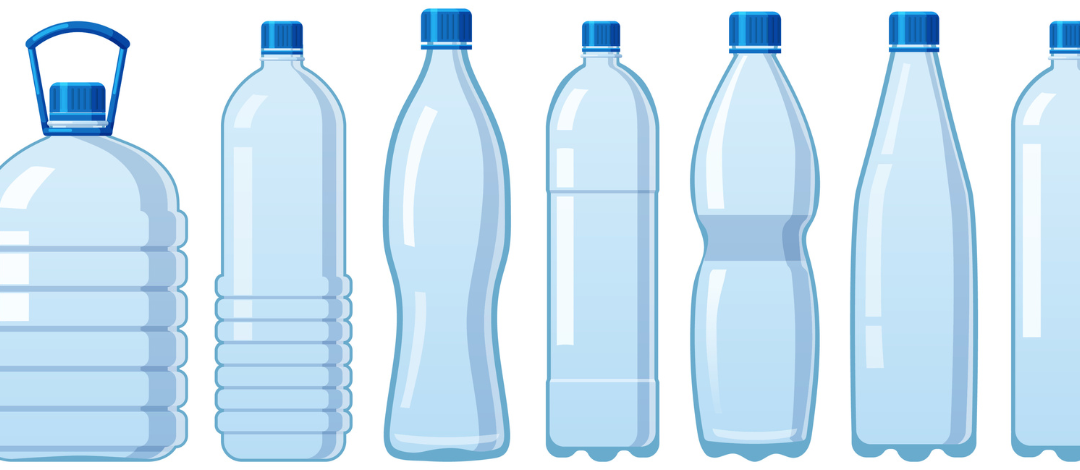
by Suzanne Holloway | Nov 15, 2024
Thanksgiving, like other holidays, promises gratitude and togetherness, but it can also bring stress, awkward moments, and even indigestion. As family members gather – from near and far – to share a meal, navigating conflicting personalities, differing opinion, and the drive for perfection can make hosting feel daunting. To help ensure a peaceful (and maybe even enjoyable) holiday, here are a few Thanksgiving dos and don’ts.
DOs
- Set Realistic Expectations. While many dream of a picture-perfect Thanksgiving, real life is rarely like a cheesy holiday movie. Accept that things might not go as planned, and those imperfections are perfectly fine. Instead of pursuing perfection, aim for a day where everyone has moments of enjoyment, even if brief.
- Plan Ahead. Hosting Thanksgiving can be overwhelming—you’re the cook, cleaner, and event planner all in one. Schedule tasks into manageable chunks over the course of a few days, prepping dishes in advance, and delegating responsibilities. Ask your guests to bring sides – this lightens your load and involves them in the holiday prep.
- Choose Your Seat Wisely. Sit near family members you get along with. If you’re arranging seating, separate personalities likely to clash to keep the atmosphere peaceful.
- Take Care of Yourself. Schedule time for yourself before, during, and after Thanksgiving. It can be a short walk, meditating, or a quick and quiet escape to play a video game or watch a movie. If you are unable to leave a stressful situation, calm yourself with five slow, deep breaths.
- Learn to Let Things Go. Family quirks and annoyances are part of the package. Practice patience and remember, it’s just for a short time.
- Remember the Reason for the Season. Reflect on or share what you are thankful for—whether it’s a good meal, health, a roof over your head, or time with loved ones. Focusing on gratitude can be a great tool to shift the mood toward positivity.
DON’Ts
- Dominate the Conversation. Thanksgiving is for catching up with friends and family, not just talking about yourself. Be mindful, and make space for others to share, especially if it’s been a while since you have seen them.
- Try to Fix Problems. Now is not the time for unsolicited advice or life coaching. One conversation over what is supposed to be a happy meal won’t mend a marriage, convince someone to start a family, make someone a better parent, or get them to hit the gym.
- Discuss Sensitive Topics. Subjects like politics, religion, or lifestyle choices are best left off the dinner table. Even well-meaning questions like “When are you getting married?” or “When can I expect grandchildren?” may seem innocent but can make people uncomfortable. Stick to lighter topics that bring people together, such as favorite family traditions, upcoming plans, or funny memories from past Thanksgivings, this helps create a positive, welcoming environment for everyone.
- Drink Excessively. Some people become argumentative or aggressive when drinking, which can escalate tensions. Avoid these individuals if they get rowdy, and prevent them from driving. If this is an issue for you, consider mocktails or non-alcoholic drinks.
Thanksgiving does not have to be a stressful situation. By prioritizing your well-being and keeping gratitude at the forefront of the celebration, you can make Thanksgiving a meaningful, enjoyable day—flaws and all.
Additional Sources

by Suzanne Holloway | Nov 15, 2024
As leaves change color and days grow shorter, seasonal depression can start affecting some individuals. Seasonal Affective Disorder (SAD), a type of depression with seasonal patterns, often begins in young adulthood and becomes more likely with age, especially for those aged 18 to 30. An estimated 5% of adults in the U.S. experience SAD, with higher rates among people assigned female at birth. Risk factors include having another mood disorder, family history of SAD or other mental health conditions, living far from the equator, or residing in cloudy regions, all of which can increase susceptibility. There are two types of SAD: winter depression and summer depression. Winter depression occurs during the late fall to early winter months. Summer depression is less prevalent, with symptoms starting in late spring to early summer.
Seasonal Depression Symptoms
- Sadness
- Anxiety
- Feeling hopelessness
- Difficulty concentrating
- Increased appetite and weight gain
- Fatigue
- Social withdrawal
- Loss of interest in pleasurable activities
- Issues with sleeping (oversleeping)
- Irritability
- Thoughts of suicide or death
Those who experience summer seasonal depression may also experience:
- Insomnia
- Decreased appetite
- Violent outbursts
While the exact cause of seasonal depression remains unclear, several theories link it to reduced sunlight and shorter winter days. Shorter days disrupt the body’s internal clock, or circadian rhythm, which affects mood, sleep, and hormone levels. Neurotransmitters, brain chemicals, including melatonin and serotonin, can become imbalanced. As winter brings longer periods of darkness, melatonin (a sleep-related hormone) increases, which may may contribute to sluggishness and fatigue. Sunlight and vitamin D help stimulate the production of serotonin (a mood-related hormone); therefore, vitamin D deficiency and reduced sun exposure can impact serotonin levels and mood. Additionally, those with SAD may also experience negative thoughts associated to the season, though it’s unclear if these thoughts are a cause or a result of the condition.
If you’re experiencing symptoms of Seasonal Affective Disorder (SAD), consult your healthcare provider for an evaluation. They may refer you to a mental health professional, as SAD can sometimes be part of a broader mental health condition. Additionally, if you or someone you know is struggling with thoughts of suicide or needs immediate help, dial 988 for free, confidential support.
Sources:

by Suzanne Holloway | Aug 28, 2024
September is National Sickle Cell Awareness Month, designated by Congress to highlight the need for research and treatment of sickle cell disease (SCD). The Centers for Disease Control and Prevention (CDC) defines SCD as a group of inherited red blood cell disorders that affect the hemoglobin, the iron-rich protein that carries oxygen. Normal red blood cells are disc-shaped and flexible, allowing them to move through blood vessels easily. However, due to the genetic mutation, the red blood cells have transformed into a crescent or “sickle” shape that are hard and sticky. These sickle-shaped red blood cells can clog small blood vessels, disrupt blood flow and cause pain and serious health issues such as deep vein thrombosis, stroke, and organ damage.

A genetic mutation creates sickle-shaped red blood cells, which are not as efficient at carrying iron and can lead to what is called Sickle Cell Anemia. (Photo source: Adobe Stock)
Sickle cell disease is inherited when a person receives one or two genes for the abnormal hemoglobin S, one from each parent. People with only one abnormal hemoglobin S gene and a normal hemoglobin gene have sickle cell trait (HbAS) and typically do not show signs of the disease. Other abnormal hemoglobin genes, such as “C,” “D,” “E,” or “O,” can also be inherited alongside the hemoglobin S, often resulting in milder forms of SCD. The most severe form, sickle cell anemia (HbSS), occurs when a person inherits two abnormal hemoglobin S genes. In the United States, one to three million people have the sickle cell trait, and more than 100,000 people have SCD, many of whom are of African descent or identify as Black. Globally, about two million people have SCD, and over 100 million carry the trait. SCD also affects individuals of South Asian (specifically Indian), Hispanic, Middle Eastern, and Southern European ancestry.
Sickle cell disease can be detected at birth through routine screening, with symptoms typically appearing around six months of age. These can range from mild to severe and include anemia, pain crises, swelling in extremities, infections, delayed growth/puberty, and vision problems. Although SCD is a life-long disease, there are treatments available to manage symptoms and improve quality of life. A bone marrow transplant was previously the only cure, but two new gene therapies approved by the FDA in December 2023 offer additional treatment options. Other treatments such as medication and blood transfusions can also help reduce symptoms and prolong life.
Individuals, particularly those with a family history of sickle cell disease or from high-risk populations, may consider seeking a genetic counselor; understanding their carrier status can help them make informed family planning decisions. When both parents have the trait, each pregnancy has a 25% chance of resulting in a child with sickle cell anemia. If only one parent has the trait, there is a 50% chance that the child will inherit the sickle cell trait. Historically, individuals with sickle cell anemia rarely lived past the age of five. Today, advances in modern medicine have extended life expectancy into the fifties, though this remains significantly lower than the average life expectancy. That is why this month is important. Increasing awareness about SCD is essential for increasing research and its funding, improving treatment options, and supporting those affected.
Sources:
Centers for Disease Control and Prevention – https://www.cdc.gov/sickle-cell/about/index.html
Sickle Cell Disease Association of America – https://www.sicklecelldisease.org/get-involved/events/national-sickle-cell-awareness-month/
National Heart, Lung, and Blood Institute – https://www.nhlbi.nih.gov/health/sickle-cell-disease
Mayo Clinic – https://www.mayoclinic.org/diseases-conditions/sickle-cell-anemia/symptoms-causes/syc-20355876
Cleveland Clinic – https://my.clevelandclinic.org/health/diseases/4579-sickle-cell-anemia
American Society of Hematology – https://www.hematology.org/education/patients/anemia/sickle-cell-trait
An Equal Opportunity Institution.

by Melanie Taylor | Aug 28, 2024
School is back in session. The long days of summer and not following a schedule have come to an end. It is important to help your child/teenager get back on a regular schedule and into a normal sleep routine.
Busy lifestyles filled with school, afterschool, and evening activities have become the norm in the American culture. But these demanding hours of multi-tasking are negatively affecting many of our daily lives. If it affects us as adults, what must it be doing to our children and teens? Overlooking the importance of sleep is damaging to our mental, physical, and cognitive health.
Sleep is a crucial biological function. It plays a significant role in restoring and recovering the body systems, improving learning and memory, and healthy brain development.

(Photo source: Adobe Stock)
Sleep deprivation can lead to physical and behavioral symptoms that can be misdiagnosed as more severe mental and behavioral disorders. Children who do not get enough sleep may not physically appear to be sleepy. However, they may struggle with attentiveness, hyperactivity, aggression, or disruptive behavior. Sleep deprivation also reduces the immune system’s ability to defend against colds and the flu.
Tips for good sleep habits for children and families include:
- Make sleep a respected priority.
Establish a consistent, relaxing bedtime routine.
- Consistency is key for regular daytime and bedtime routines for sleep.
Attempt to maintain a regular sleep and wake schedule, including on weekends.
- Provide children with positive attention before bedtime.
This may reduce conflict or resistance to bedtime routines.
- Keep bedrooms dark, cool, and quiet.
Do not have a TV, computer, or cellphone in the room.
- Use the bed only for sleep.
Avoid reading or doing homework in bed. Remove activities from the sleep environment that may be stimulating, such as devices with screens and video games.
- Avoid caffeine in the late afternoon and evening, or for a minimum of three hours before bed.
- Encourage children to sleep in their beds.
It helps them learn to fall asleep independently. Parents also need uninterrupted sleep.
The National Sleep Institute recommends these hours of sleep for different age groups:
- 12–17 hours for newborns and infants
- 11–14 hours for ages 1–2
- 10–13 hours for ages 3–5
- 9–11 hours for ages 6–13
- 8–10 hours for ages 14–17
- 7–9 hours for adults
As the school year begins, help your children get a strong start by guiding them through healthy sleep habits. Restful sleep will prepare them for school days with fun-filled learning experiences.
If you have concerns about your child’s sleep patterns, etc. be sure to reach out to your child’s physician or a mental health professional to help them learn good sleep habits for a successful future.
Source: Mayo Clinic Health System – https://www.mayoclinichealthsystem.org/
An Equal Opportunity Institution.

by Suzanne Holloway | Aug 28, 2024
There always appears to be one person in every group that mosquitoes seem to flock. If you are that person, you know the frustration. While scientists do not fully understand why some people are mosquito magnets, increased knowledge of their preferences can help prevent bites and the spread of mosquito-borne diseases.

UF/IFAS Photo by Camila Guillen
Despite their tiny size, mosquitoes are the deadliest animal on Earth, claiming more lives than any other creature. They transmit diseases like dengue, yellow fever, Zika, malaria, and West Nile virus (WNV). West Nile virus is the most common mosquito-borne illness in the United States, with an average of 2,400 reported cases annually. Globally, malaria remains the leading cause of preventable death, with nearly 250 million cases and over 600,000 fatalities reported in 2022. Approximately 40% of the world’s population is at risk.
So what attracts mosquitos to certain individuals?
Several factors influence mosquito attraction. One study found that mosquitoes prefer the O blood type, but they do not avoid or dislike other blood types. Beyond blood type, characteristics such as odor, skin composition, body heat, and carbon dioxide play significant roles. Mosquitos are highly sensitive and drawn to specific chemicals in sweat – lactic acid, ammonia, and uric acid – which are influenced by diet, hygiene, health, and genetics. High levels of carboxylic acid, a fatty acid found in the skin, are also associated with attractiveness.
Those who exhale more carbon dioxide – namely, larger individuals – are more likely to be targeted by mosquitoes. They love the carbon dioxide aroma and can detect it from nearly half a football field away. Additionally, mosquitoes use thermoreceptors, heat-sensing organs, to detect changes in temperatures; they are attracted to higher temperatures, often targeting the extremities, head, and neck. Pregnant people are particularly attractive to mosquitoes due to their slightly elevated body temperature and hormone-related chemical changes in body odor. Furthermore, mosquitoes tend to prefer dark colors like black and navy – something to consider when getting ready during the hot summer months.
Understanding these factors can help individuals take steps to reduce their attractiveness to mosquitoes and protect themselves from serious diseases. Click for more information about mosquito repellents.
Sources:
Centers for Disease Control and Prevention (CDC)
National Institutes of Health
Hartford HealthCare
Our Blood Institute
An Equal Opportunity Institution.

by Samantha Kennedy | Jul 19, 2024
As the summer sun blazes across the country, residents and visitors alike are reminded of the critical importance of staying hydrated. With temperatures soaring and humidity levels high, the risk of dehydration becomes a significant health concern. Proper hydration is not just a matter of comfort but a vital necessity to maintain health and well-being during the hot summer months.
The hot climate presents a challenging environment where dehydration can quickly set in, especially for those who spend a lot of time outdoors. Whether spending time at the beach, enjoying a theme park, or simply running errands, the intense heat can lead to rapid fluid loss through sweat. Dehydration occurs when the body loses more fluids than it takes in, and in Florida’s summer heat, this can happen faster than one might expect.
Dehydration can have serious health implications. Mild dehydration can cause symptoms such as dry mouth, headache, and fatigue. More severe cases can lead to dizziness, confusion, rapid heartbeat, and even heat stroke—a medical emergency that requires immediate attention. Children, the elderly, and individuals with chronic illnesses are particularly vulnerable to the effects of dehydration.
The body relies on water to perform critical functions, including regulating temperature, maintaining joint lubrication, and facilitating digestion. During hot weather, the body works harder to cool itself through sweating, increasing the need for water. Failing to replenish this lost fluid can disrupt these essential processes, leading to a range of health issues.
Need some tips for staying hydrated? Here are few simple ones.

The heat and humidity of summertime increase the need for proper hydration, especially when outside. (Adobe Stock photo)
The most straightforward way to stay hydrated is by drinking water throughout the day. Carry a water bottle with you and make a habit of sipping regularly, even if the feeling of thirst is not strong. Thirst is a late indicator of dehydration, so proactive drinking is crucial.
Incorporate water-rich foods into your diet. Fruits and vegetables such as watermelon, cucumbers, oranges, and strawberries have high water content and can help keep you hydrated. They are also healthy choices that are rich in nutrients that can support overall health.
Both alcohol and caffeinated drinks can contribute to dehydration. While it is okay to enjoy these in moderation, be sure to offset them with extra water intake.
Urine color is an easy way to gauge overall hydration level. Light yellow or clear urine generally indicates proper hydration, while darker urine suggests that more fluids are needed for proper hydration.
Whenever possible, seek shade or air-conditioned environments during the hottest parts of the day. Wearing light, breathable clothing and a hat can also help reduce the risk of overheating and fluid loss.
Public parks, beaches, and recreational areas often have water fountains and hydration stations. Local health departments and organizations frequently run awareness campaigns and provide resources to educate the public about the importance of hydration.
Emergency services also stand ready to respond to heat-related health issues. Citizens are encouraged to look out for one another, especially vulnerable populations, ensuring that everyone has access to the necessary resources to stay hydrated.
As summer continues to heat up, the message is clear: staying hydrated is essential for enjoying all that Florida has to offer. By taking simple but effective steps to maintain proper hydration, residents and visitors can protect their health and fully embrace the sunny, vibrant Florida summer.
An Equal Opportunity Institution.










